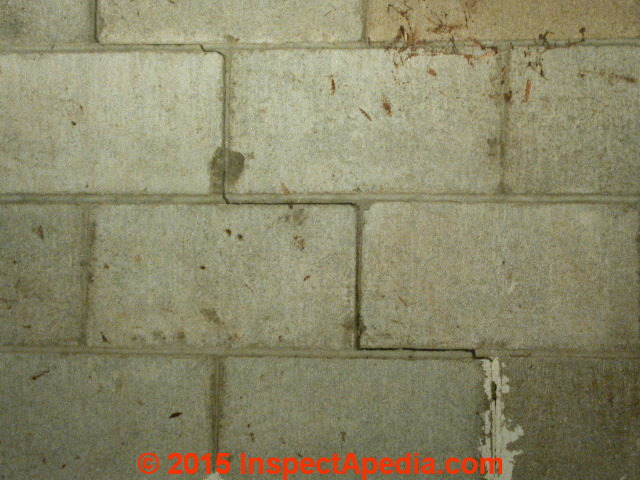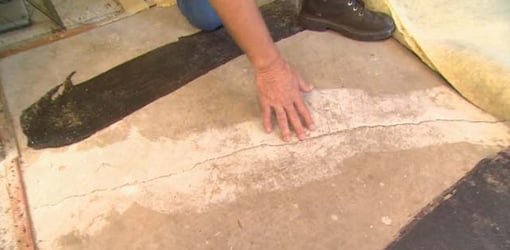Do Cracked Tiles Mean Foundation Problems
The chimney, like any other part of the home, can have problems and defects which make it less efficient and safe to use. One of the most common chimney ailments homeowners run into are cracked flue tiles. When left untreated, this issue can wreak havoc on the home’s chimney system. Cracked tiles can lead to dangerous gas leakage allowing carbon monoxide to seep into the home’s interior. It can also allow deadly heat transfer to combustible materials in the surrounding areas increasing the risk of home fire.
Why It Happens
Cracked tiles often occur when heat is not evenly disbursed throughout the chimney. This leads to unequal expansion of the tiles causing them to buckle, crack, or split. Clay tiles are most prone to this problem because the material is unable to quickly absorb the heat.
Cracked foundations can lead to framing issues, roof issues, problems with doors and windows and even leaks in basement walls. Correction of foundation and structural problems can be very costly and occasionally foundation cracks will be a warning sign of other structural issues with a home. Shrinkage cracks in the concrete have transferred through the tiles. Another cause could be 'foundation rod stress' that can manifest itself during settling and curing of the concrete. This can cause superficial cracking in the concrete. If the tiles were laid without suitable flexible adhesive, the cracking can also appear in the tiles.

How to Fix It
When cracked tiles are found, the best way to remedy the situation is by lining or relining the chimney itself. A stainless steel chimney liner is the preferred option among homeowners as it often comes with a lifetime warranty and typically never needs to be replaced. Single clay flue tiles can also be installed to replace broken ones but will often crack again creating another safety hazard within the flue. If damage is minimal, a product such as HeatShield® Cerfactory Flue Sealant can be used to fill the cracks. A new liner though will offer the best protection while providing a more permanent solution.
Regardless of how you choose to address a cracked tile problem, hiring a professional sweep to do the work is important. They have the expertise and knowledge to complete the often complex lining process while also ensuring the chimney is compliant with local fire codes. For Chicago area homeowners, Lindemann Chimney Service is the trusted partner they turn to for all of their chimney needs. Since 1969, they have been offering their customers quality chimney and fireplace installations and repairs.
Learn how to tell when a foundation crack might indicate a serious structural problem—and when you can repair it easily yourself, and then rest easy.
Photo: istockphoto.com
Your home’s foundation—the concrete walls surrounding a basement or crawl space—supports the entire weight of the house. So it’s natural to be concerned if you ever discover cracks in the concrete. Fortunately, many foundation cracks are not serious enough to warrant professional attention, and repairing a foundation crack can be a DIY task as long as the crack doesn’t threaten structural integrity. The best way to ensure that a crack doesn’t indicate a major issue is to have a foundation contractor or a structural engineer take a look, but some general rules can help you decide whether or not you should worry. So, see where your crack falls on the range of scenarios and understand how to move forward.
If you find hairline cracks, don’t sweat it.
Within a year after construction, hairline cracks (about the width of a sewing thread) commonly appear on the inside of basement walls, most often near windows and doors or in the corners of the basement. This is due to normal “settling,” or the concrete shrinking slightly as it cures. As long as the cracks are hairline in width, there’s nothing to worry about. If you’d like to cover them, apply a coat of paint suitable for masonry, such as INSL-X TuffCrete Acrylic Paint (available from Amazon).
If a narrow crack is new, monitor it for expansion.
When you notice a new crack that’s not hairline but still no wider than 1/8-inch, it’s probably due to settling and most likely it doesn’t present a problem—unless it continues to expand. To monitor a crack, make a pencil mark at both ends and write the date by each mark. In addition, measure the width at the widest point and write that on the wall as well. Check the crack at least monthly for several months and make additional marks and dates if the crack expands.
If no expansion occurs and no moisture seeps through, the crack is stable and you can fill it will grout, such as Saschco Gray MorFlexx Grout Repair (available from Amazon), and then smooth out with a putty knife.
Photo: istockphoto.com
Do Cracked Tiles Mean Foundation Problems Without
If the crack is wider than 1/8-inch, it should be sealed.
Cracks between 1/8 and ¼ of an inch often result from house settling or concrete shrinking within a few months after construction, and so may pose no structural problem. But it’s a good idea to seal them to keep out moisture, soil smells, or even radon gas (check this EPA site to see if radon is a problem in your area). Repairing a foundation crack in this width range is a simple DIY project that involves filling the crack with caulk compatible with concrete, such as GE’s Concrete and Masonry Silicone II Caulk (available from Amazon).
If a horizontal crack appears where the foundation wall meets the basement floor, it’s not a structural problem, but it should be sealed.
Because basement floors are poured after the walls are poured, the concrete where they meet doesn’t always bond completely—and this is a common spot for a crack to appear when the house settles. The crack can be up to ½ inch wide and it still doesn’t pose a problem other than letting in moisture, smells, and gasses. Repairing a foundation crack of this nature is similar to repairing other non-structural cracks: Fill it with a caulk suitable for use on concrete. If a crack between the wall and floor exceeds ½ inch (some can be two inches wide or more inches wide), call a foundation contractor who can fill it by injecting an expanding epoxy.
If water is seeping through a crack, seal the crack and divert the water.
/cdn.vox-cdn.com/uploads/chorus_image/image/65891854/00_concrete_xl.0.jpg)
Basements and crawl spaces are normally damp because they’re located below grade (yard level). But when water—not just moisture—actually seeps through a crack, it poses an increased risk of mold and mildew growth. While the crack should be sealed as described above, it’s even more important to keep water away from the foundation wall. This can be done by removing foundation plantings, installing guttering and downspouts, and adding soil to the yard along the foundation in order to create a two percent or more slope away from the house that allows water to run away from the foundation.
Photo: istockphoto.com
If a foundation wall crack is wider than ½-inch, have a pro take a look.
Although many larger cracks may still turn out to be harmless, it’s a good idea to have a foundation contractor or a structural engineer inspect the foundation to check for structural problems.


Repairing a foundation crack wider than ½-inch may well be a DIY task, but on the off-chance that the crack is due to something more serious, a professional opinion should be sought first.
If a large crack accompanies a bulge in a foundation wall, it indicates a structural problem.
Foundation walls are reinforced with steel to keep them from moving. In areas with clay soil, the clay can swell when it becomes wet and put intense lateral (hydrostatic) pressure on the wall, pushing it inward. This is a major problem, and a foundation contractor should be consulted.
If the bulge is slight, it might be difficult to see, but you can hold a long straightedge, such as a six-foot level, along the wall to determine whether the area with the crack is bulging. Even a slight bulge that accompanies a crack is cause for concern and a pro should take a look.
If a crack is horizontal, it presents more of a risk than a vertical or diagonal crack.
While any crack can be unsightly, vertical and diagonal cracks are usually the result of normal settling, and they can be treated as directed above. Like bulging walls, horizontal cracks are typically caused by hydrostatic pressure, and even if the wall isn’t bulging, it’s time to call in the pros.
Stabilizing a foundation with structural problems can involve a number of different remedies, including excavation around the outside of the wall, hydraulic lifting, or underpinning the wall with steel, but only a foundation contractor will be able to assess the extent of the problem and offer a suitable remedy.
Do Cracked Tiles Mean Foundation Problems In The World
